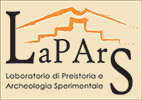Calasetta
In 2020, the "Calasetta. Cultural paths between past and present" project was launched in collaboration with the municipal administration of Calasetta, with which the University of Sassari signed a multi-year agreement, with the aim of reconstructing, through the current methods of territorial analysis, the ways of frequenting the territory, with particular attention to the prehistoric and protohistoric phases. At the same time, through the realization of Public Archeology events and products, it aims to enhance and promote the cultural heritage of the territory.
Previous research examining the territory surrounding Calasetta has provided evidence of occupation from the Early Neolithic to the present day. Regarding the prehistoric phases, settlements were identifiable thanks to the presence of surface finds, mainly relating to the remains of stone tool manufacture. There was a complete absence of structural remains, probably due to successive human activity.
Field research covered a vast area that extends between Campu Scià Maìn (this name appears on historical land registries as well as in both ancient and contemporary oral tradition) and Tupei, where, during the course of previous investigations, archaeological surface finds were recovered.
The activities were designed to achieve the following objectives:
- A reconstruction of the relationship between each site and the surrounding natural environment;
- The identification and extension of each settlement;
- A reconstruction of the type of settlement;
- The understanding of how internal and external spaces were used in dwellings;
- A reconstruction of the occupation phases of each site;
- A reconstruction of the dynamics of the use of landscape and its resources in relation to the coeval sites found on the island of Sant'Antioco and at Sulcis, in terms of prehistoric cultural development in the western Mediterranean;
- The development of teaching resources for the university, through the organisation of on-site work experience;
- The creation of both real and virtual archaeological and naturalistic trails;
- The popularisation and promotion of cultural heritage through the organisation of public archaeological events.
The excavation confirmed that occupation of the site began during the Early Neolithic. Other phases are more sporadically represented by Final Neolithic, Punic and Roman occupation as well as that of the present day.
